
Car wireless ging
Car wireless ging typically involves several modules in design, including control chips, magnetic induction coils, sensors, power management, and others. When ing a wireless ging module, attention should be paid to ging efficiency, safety, and compatibility. This article will take systems with power levels below 15W as an example to detail the important criteria for ing power management chips.应用框图
As user demand for ging convenience increases, the technology of wireless ging for mobile phones in vehicles is rapidly advancing, with higher maturity and broader applications. With widespread adoption in cars, it eliminates the need for drivers to search for sockets, distinguish interfaces, and handle ging cables, thereby improving driving safety. In terms of design, it integrates seamlessly with the car interior, making it both aesthetically pleasing and practical.
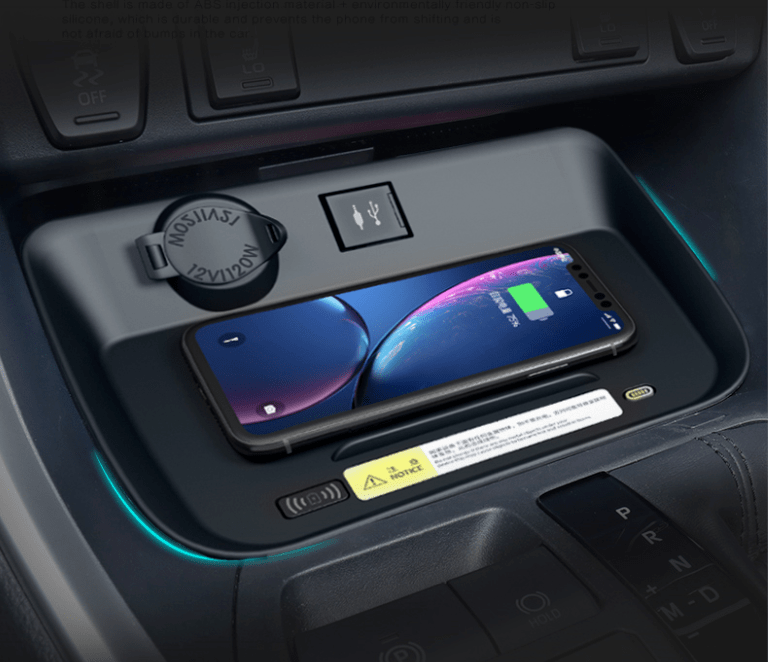
According to monitoring data from the Gao Gong Intelligent Automotive Research Institute, in the Chinese market (excluding imports and exports), the number of new passenger cars equipped with standard front-loaded mobile wireless ging modules reached 3.5835 million vehicles in 2021, an increase of 120.43% compared to the previous year, with a front-loaded adoption rate of 17.57%. It is estimated that the adoption rate will reach 25% in 2022.
Car wireless ging typically involves several modules in design, including control chips, magnetic induction coils, sensors, power management, and others. When ing a wireless ging module, attention should be paid to ging efficiency, safety, and compatibility.
Charging Efficiency: If the ging efficiency is low, it will affect the user experience. Therefore, researchers need to pay attention to factors such as ger power, transmission distance, transmission efficiency, and heat loss to improve ging efficiency.
Safety: Considerations need to be made for issues such as battery overheating, short circuits, overging, etc., to ensure product safety. Also, electromagnetic radiation issues should be considered to avoid adverse effects.
Compatibility: Consider the ging needs and methods of different devices, and ensure compatibility with different brands and models of phones and other devices.
Currently, the mainstream of car wireless ging solutions is primarily below 15W. This article will take systems with power levels below 15W as an example to detail the important criteria for ing power management chips.
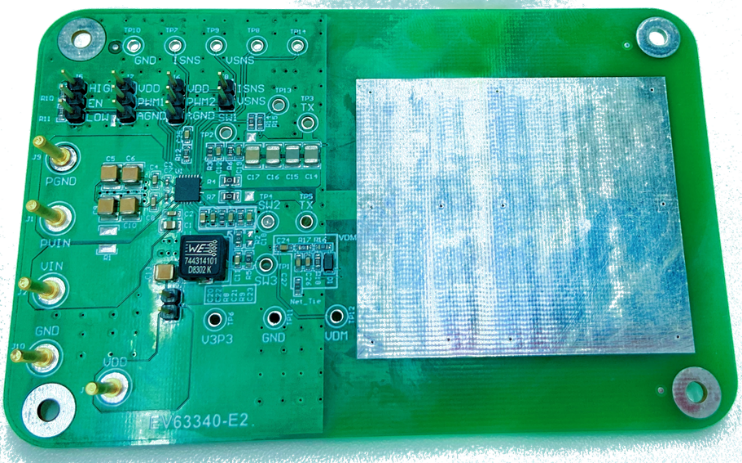
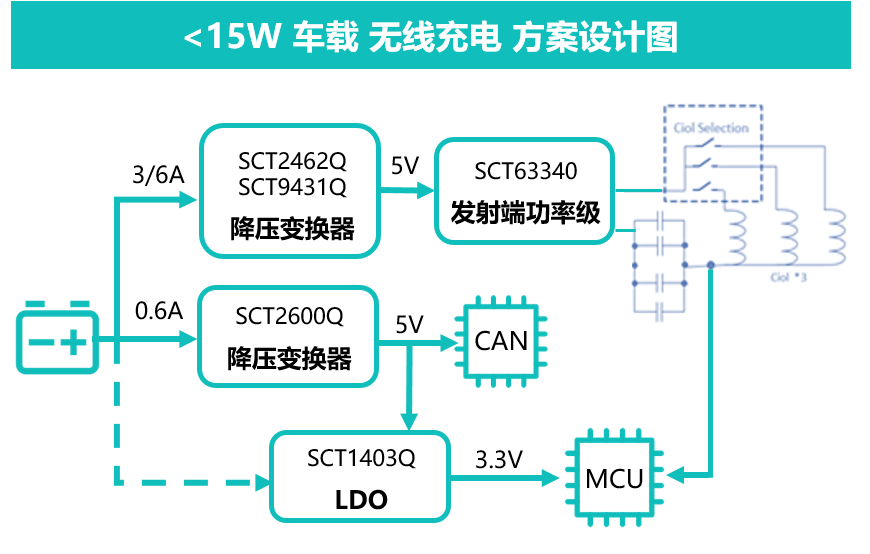
Input Power Converter
In wireless ging applications, the low dropout mode of the input power converter is standard, where low dropout means high efficiency and low EMI.
*Define an input voltage range, within which the input voltage can be directly transmitted to the output terminal of the buck-boost regulator. The benefit of this approach is that there are no switching actions, resulting in very high circuit efficiency and no audio noise. The output ripple is almost indistinguishable from normal buck mode.
At the same time, Xinzhou's patented multi-level gate drive technology effectively suppresses switch node ringing, making it easier to pass relevant EMI tests. According to measurements on the SCT2462EVM board, SCT2462 exhibits a ringing overshoot of only 3.4V when fully loaded, with no multiple oscillations, and the waveform is very clean when turned off.
Both the SCT2462Q and SCT9431Q automotive-grade buck converters support low dropout mode. The SCT2462Q can be used for 15W solutions, supporting 6A output with a maximum voltage withstand of up to 42V; using second-generation low dropout technology, it can support lower input-output voltage differentials (maximum duty cycle of 99.3% + diagram), effectively expanding the input voltage range of the wireless ging power transmission stage. The SCT9431Q can be used for 10W solutions, supporting 3A output with a maximum voltage withstand of up to 42V.
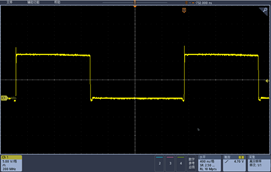 |
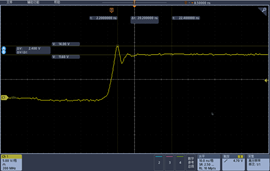 |
CAN and MCU Power Supply Solution
Most commonly used CAN communication interface devices on the market are powered by 5V, while the voltage for most MCUs is lowered to 3.3V. This discrepancy can be addressed by using SCT2600Q (0.6A output buck converter) and SCT71403Q (300mA LDO solution).
SCT2600Q is a automotive-grade primary power supply with a maximum Vin of 60V. It supports a 2.1MHz switching frequency, which helps avoid interference with the AM band (540 KHz to 1600KHz) in vehicles. It features a light load working mode PSM, significantly improving efficiency under light loads. With a load of 4mA, the efficiency is greater than 80%.
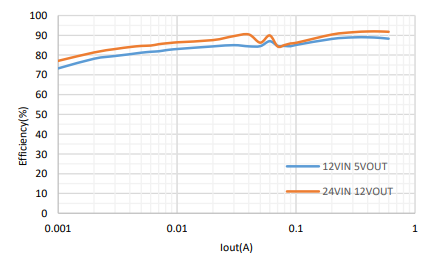
SCT71403Q is an automotive-grade primary LDO, with VINmax=42V, VOUT=3.3V or 5V, Imax=300mA. Its standby current is only 2.4uA. It integrates OCFB (Over-Current Feedback), OTP (Over-Temperature Protection), UVLO (Under-Voltage Lockout), PG (Power Good) voltage and current detection, and protection functions. This effectively protects against scenarios such as output load short circuits and large currents, enhancing user safety and reliability. The extremely low standby current significantly reduces the standby power consumption of the entire system, making it ideal for applications that require constant standby.
Wireless Charging Transmitter Power Level
Wireless ging technologies are generally divided into three types: electromagnetic induction, electromagnetic resonance, and radio waves. Each type has corresponding standards and organizations working to promote market adoption and standardization. Currently, electromagnetic induction, following the Qi standard, dominates the market, with both transmitter and receiver solutions becoming increasingly refined. In terms of transmitter performance, several key aspects are considered:
- Operating voltage range: 3V-15V.
The SCT63340 chip has a supply voltage range of 4.2V to 30V, and the operating voltage range for the power level is 1V to 26V. It is currently the chip with the widest input voltage range for 15W wireless ging transmitters.
- Conversion efficiency.
The SCT63340 chip integrates a full-bridge MOSFET with a resistance of 13mohm. Its power transmission efficiency reaches 86% at 15W, which exceeds the industry average.
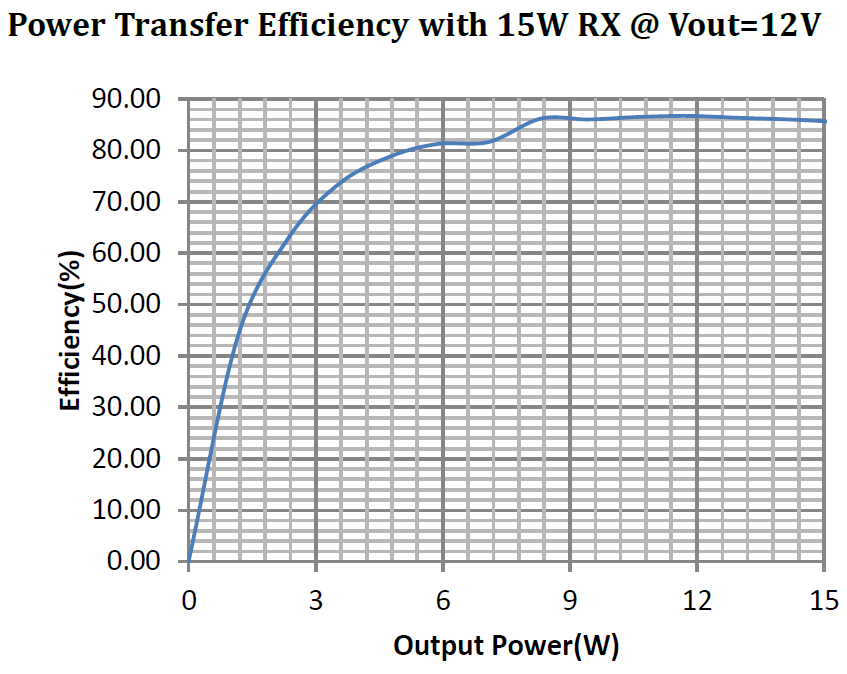
- Chip size and heat dissipation.
The SCT63340 adopts a QFN 4x4 package, which maximizes the saving of board space and enables high-density integration solutions. It provides reliable soldering quality and excellent heat dissipation capability. With good electrical and thermal performance, it is small in size and light in weight.
The SCT63340 also comes with built-in regulation function, simplifying circuit design and saving MCU functional costs. Xinzhou Technology continues to provide customers with a wide range of power chip options and iterates rapidly based on market demand.
For more customized power management solutions, please feel free to contact us.







 京公网安备 11010802042628号
京公网安备 11010802042628号